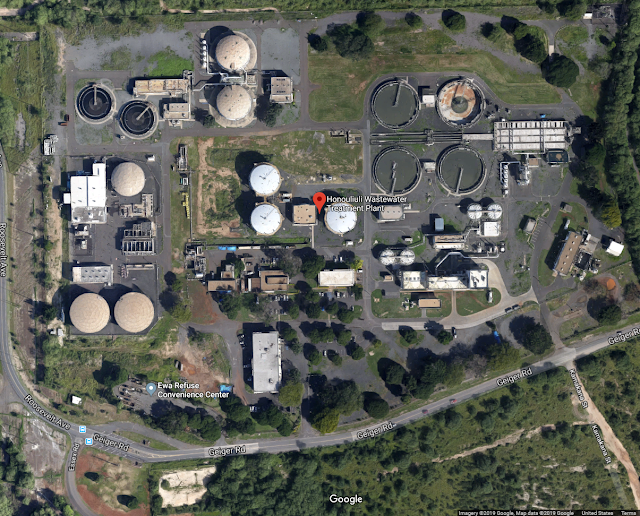Hydrology
 |
| Hawaii's Water Cycle by the Honolulu Board of Water Supply |
Water Supply in Hawaii
One thing I absolutely love about Hawaii is the transparency. The State's website has a Residents section that includes a Newcomers section. The Utilities tab is straightforward:
 |
| Hawaii's Newcomers Guide |
 |
| Board of Water Supply - Oahu Watersheds from the Watershed Management Plan |
Despite the ubiquity of residential irrigation systems and downspouts directly connected to the storm sewer system, we do take water conservation planning seriously. In fact, BWS runs the Honouliuli Wastewater Recycling Plant which produces reverse-osmosis treated water for commercial irrigation and industrial processes, and is a featured stop on the City and County of Honolulu's Tour de Trash. Last year I got to spend my birthday on the Wastewater Management tour, which began with a collection system maintenance demonstration on the streets of Kapolei, continued to the Honouliuli Wastewater Treatment plant, and finished at the Honouliuli Water Reclamation Facility
The State of Hawaii, Department of Land and Natural Resources, Commission on Water Resource Management . Municipal Sewer & Water Magazine recently ran an interview with someone who works in water management in Hawaii.
Hawaii Freshwater Initiative
Hawaii rain data from NWS Pacific Regional Headquarters and the rain gauge map
USGS Stream Stats
Methods
I spent 4 years as a Hydrologist 1315 (even promoted to an 11), and the only prior hydrology training I had was black box equations in the back of the Stream Ecology and Wetlands Ecology textbooks. On the job I learned from USGS, particularly the U.S. Geological Survey Techniques of Water Resources Investigations, which while still partly available online, has been replaced by the National Field Manual for the Collection of Water-Quality Data (there was an announcement in 2017). You may notice this webpage is subtitled Techniques and Methods Book 9 Handbooks for Water-Resources Investigations. Searching for USGS Techniques and Methods provides a file directory of Books and chapters listed alphabetically, not in actual order (11 comes after 1, 2 comes after 19).There were 9 books in the original TWRI:
Book 1 - Water Data by Direct Measurement
Book 2 - Environmental Data (geophysics of surface and groundwater)
Book 3 - Application of Hydraulics
Book 4 - Hydrologic Analysis and Interpretation
Book 5 - Laboratory Analysis
Book 6 - Modeling Techniques
Book 7 - Automated Data Processing and Computers
Book 8 - Instrumentation
Book 9 - Handbooks for Water Resources investigations (including Section A: National Field Manual for the Collection of Water-Quality Data)
In the transition from the Techniques of Water-Resources Investigations to Techniques and Methods, 6 more books on topics beyond just water were added:
Book 10 - Isotopes
Book 11 - Spatial Data
Book 12 - Earthquakes / Seismic Activity
Book 13 - Volcanoes
Book 14 - Landslide and Debris Flow Assessment
Book 15 - Field Manual of Wildlife Diseases
Book 16 - Data Resource Management
EPA. 1991. Inspecting a Parshall Flume. PublicResourceOrg on Youtube.com.
ISCO 1985. Open Channel Flow Measurement Handbook. Lincoln, Nebraska.
Stevens. Water Resources Data Book. Beaverton, Oregon
US Department of the Interior, Bureau of Reclamation. 1967. Water Measurement Manual, 2nd edition.
US Environmental Protection Agency. 1988. NPDES Compliance Inspection Manual, USEPA Office of Water
US Environmental Protection Agency. 1981.
USEPA, Region4, Science & Ecosystems Support Division. 2015. Wastewater Flow Measurement Operating Procedure. SESDPROC-109-R4, Athens, GA




Comments
Post a Comment